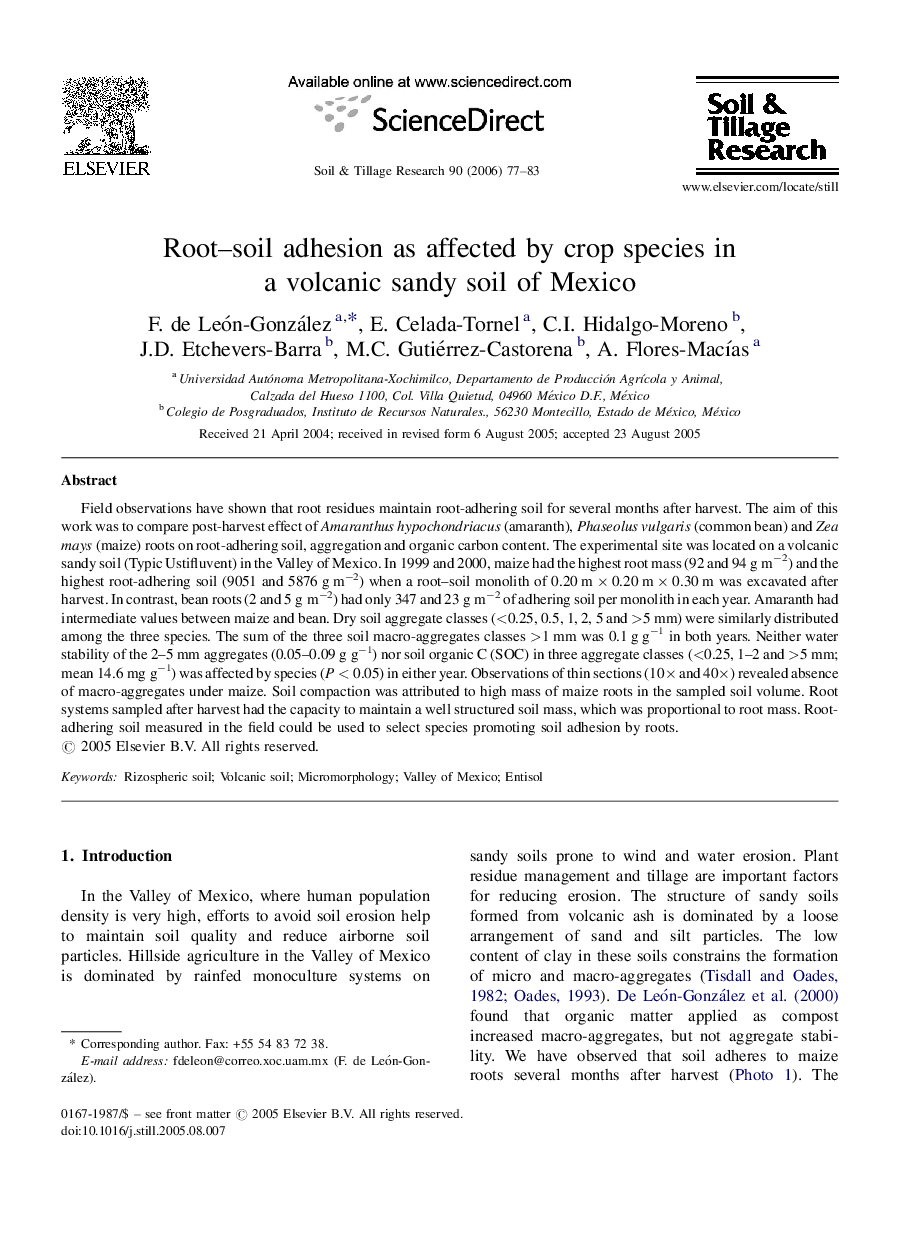| Article ID | Journal | Published Year | Pages | File Type |
|---|---|---|---|---|
| 306817 | Soil and Tillage Research | 2006 | 7 Pages |
Field observations have shown that root residues maintain root-adhering soil for several months after harvest. The aim of this work was to compare post-harvest effect of Amaranthus hypochondriacus (amaranth), Phaseolus vulgaris (common bean) and Zea mays (maize) roots on root-adhering soil, aggregation and organic carbon content. The experimental site was located on a volcanic sandy soil (Typic Ustifluvent) in the Valley of Mexico. In 1999 and 2000, maize had the highest root mass (92 and 94 g m−2) and the highest root-adhering soil (9051 and 5876 g m−2) when a root–soil monolith of 0.20 m × 0.20 m × 0.30 m was excavated after harvest. In contrast, bean roots (2 and 5 g m−2) had only 347 and 23 g m−2 of adhering soil per monolith in each year. Amaranth had intermediate values between maize and bean. Dry soil aggregate classes (<0.25, 0.5, 1, 2, 5 and >5 mm) were similarly distributed among the three species. The sum of the three soil macro-aggregates classes >1 mm was 0.1 g g−1 in both years. Neither water stability of the 2–5 mm aggregates (0.05–0.09 g g−1) nor soil organic C (SOC) in three aggregate classes (<0.25, 1–2 and >5 mm; mean 14.6 mg g−1) was affected by species (P < 0.05) in either year. Observations of thin sections (10× and 40×) revealed absence of macro-aggregates under maize. Soil compaction was attributed to high mass of maize roots in the sampled soil volume. Root systems sampled after harvest had the capacity to maintain a well structured soil mass, which was proportional to root mass. Root-adhering soil measured in the field could be used to select species promoting soil adhesion by roots.
